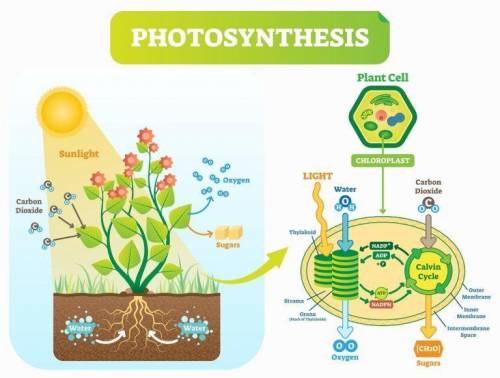Increasing
carbon dioxide
concentration
increases the
rate of
photosynthesi...

Biology, 29.11.2020 22:50 dsperez201938
Increasing
carbon dioxide
concentration
increases the
rate of
photosynthesis
as carbon
dioxide (CO2) is
a
in
photosynthesis.
Above a certain
concentration,
further
increases in
concentration
do not increase
the rate of
photosynthesis
and it stops
being a limiting
factor.

Answers: 3
Another question on Biology


Biology, 22.06.2019 03:00
To answer this question, researchers studied populations of the dusky salamander (desmognathus ochrophaeus) living on different mountain ranges in the southern appalachian mountains. the researchers tested the reproductive isolation of pairs of salamander populations by leaving one male and one female together and later checking the females for the presence of sperm. four mating combinations were tested for each pair of populations (a and b)—two within the same population (female a with male a and female b with male b) and two between populations (female a with male b and female b with male a). the proportion of successful matings for each mating combination was measured. for example, when all the matings of a particular combination were successful, the researchers gave it a value of 1; when none of the matings were successful, they gave it a value of 0. then the researchers calculated an index of reproductive isolation that ranged from 0 (no isolation) to 2 (full isolation). the reproductive isolation value for two populations is the sum of the proportion of successful matings of each type within populations (aa + bb) minus the sum of the proportion of successful matings of each type between populations (ab + ba). the table provides data for the geographic distances and reproductive isolation values for 27 pairs of dusky salamander populations.
Answers: 1

Biology, 22.06.2019 09:50
What is the genotype of the male circled in pink? ο χου lo xay xaya done answer was xay
Answers: 2

Biology, 22.06.2019 17:30
Ms. w, a 21-year-old woman, came into a clinic after suffering a deep laceration on her foot while walking barefoot around her yard. the wound was cleaned, sutured, and bandaged, and she was released to return home after receiving tetanus antitoxoid. within 72 hours, the wound area was red and swollen, the suture line was dark in color, and it was accompanied by severe throbbing pain. ms. w had a high fever, her heart felt like it was racing, and she was finding it hard to concentraten even on simple tasks. she returned to the clinic and was immediately taken to the hospital. following lab tests, a diagnosis of acute necrotizing fasciitis was made. discussion questions 1. explain why ms. w. received a tetanus antitoxoid before leaving the hospital. (see chapters 3 and 4, infection and passive immunity.) 2. explain how acute necrotizing fasciitis developed in this case and the pathophysiology involved. (see acute necrotizing fasciitis.) 3. what is the potential outcome for ms. w if antibiotic drugs do not reduce the infection quickly?
Answers: 3
You know the right answer?
Questions



English, 24.02.2021 08:40



English, 24.02.2021 08:40









Physics, 24.02.2021 08:40

Social Studies, 24.02.2021 08:40

Mathematics, 24.02.2021 08:40


Mathematics, 24.02.2021 08:40

History, 24.02.2021 08:40




